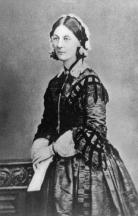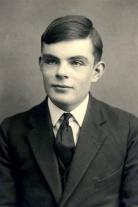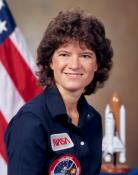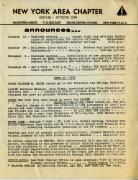The Fight for Rights: A Comparison between modern LGBTQ+ and Victorian Era Women's Rights
Created by Richard Evans on Sat, 12/05/2020 - 15:37
I have always been fascinated by the different movements across human history regarding basic human rights. As a human race we seem extremely talented at pushing each other apart and focusing only on differences, but when people start fighting for rights we are drawn together and begin to see just how similar everyone is. This pattern has repeated itself over and over again with different groups striving for recognition. Women, LGBTQ+, civil, human, and religious rights, to name a few, have trodden the same path over and over again, though at different times in history. I want to compare two of these movements, LGBTQ+ and women's rights movements. The reason I chose these two movements to focus on is because the women's rights movement had just begun to gain traction and become a well known issue during the Victorian era, so I felt it was the most appropriate for the time period. The reason I chose the LGBTQ+ rights movement is because I am a member of this community, and we are still working on gaining a lot of our rights today. The women's fight for rights also has a lot of parallels to the LGBTQ+ fight for rights. Both groups have had a long fight for recognition and acknowledgement before they could make any changes, and both have had to fight for similar things as well. Marriage rights, equality in the eyes of the law, anti-discrimination, and to be seen as normal when exercising these rights.
I chose to parallel these two different eras due to the similarities in events. Just as there were prominent females like Florence Nightingale who changed the field of medicine, there have been prominent LGBTQ+ people who have changed science such as Alan Turing and Sally Ride. There have also been fights for recognition and sympathy from the public like the book a Vindication of the Rights of Women, and the Pride parades. The formation of groups of similar mind has also been central for changes in fundamental rights, and these two fights are no exception. The Women's Protective and Provident League union fought for women's rights while the Daughters of Bilitis fought for lesbian rights. These are only a few of the many similarities between these two time periods and movements, but these events still show how similar the movements are. I hope this comparison shines some light on why I chose to compare these two vastly different times, and I hope you enjoy!
Timeline
Chronological table
| Date | Event | Created by | Associated Places | |
|---|---|---|---|---|
| 1 Jan 1792 |
Vindication of the Rights of Woman
ArticlesAnne K. Mellor, "On the Publication of A Vindication of the Rights of Woman" Related Articles |
David Rettenmaier | ||
| The start of the month Winter 1854 to Summer 1856 |
Florence Nightingale changes modern Nursing during the Crimean WarFlorence Nightingale's volunteer nurse work during the Crimean war held lasting impresstions with the medical community. She proved that sanitation in hosptials and medical residence leads to quicker recovery and less deaths overall. With Nightingale's insight and planning, she created an enviroment of homes for the nurses assisting in the Crimean war. This was a safe place for the female nurses to live while they worked admist the harsh backdrop of war. Her knowledge and patience for the soldiers saved many lives and helped future generations progess with modern medicine. CLondon: Tinderpress. Perry Pictures/Library of Congress, Washington, D.C. (LC-USZ62-5877) Markovits, Stefanie. “On the Crimean War and the Charge of the Light Brigade.” BRANCH: Britain, Representation and Nineteenth-Century History. Ed. Dino Franco Felluga. Extension of Romanticism and Victorianism on the Net. Web. [Here, add your last date of access to BRANCH]. Young, Arlene. “The Rise of the Victorian Working Lady: The New-Style Nurse and the Typewriter, 1840-1900.” BRANCH: Britain, Representation and Nineteenth-Century History. Ed. Dino Franco Felluga. Extension of Romanticism and Victorianism on the Net. Web. [Here, add your last date of access to BRANCH]. |
Rebekah Hansen | ||
| 1857 to 1 Jan 1858 |
Matrimonial Causes Act of 1857This act, passed by Parliament, moved divorce from being in a religious jurisdiction to a civil jurisdiction. Previous to this act, divorce was a lengthy and expensive process that could possibly take years. This act ensured the right of audience to all. Men and women were still given unequal treatment, with men only needing to cite adultery as a reason, while women needed to cite adultery as well as at least one other reason. However, after this act was passed, women continually gained greater rights in marriage and regarding divorce. Because many of the voices of the novels we are reading are women, the need for a protected right to divorce by both parties in the marriage is needed, especially since the characters don't seem to know each other very well before getting married. Image: Royal Standard of the United Kingdom. Image source: https://en.wikipedia.org/wiki/Royal_Standard_of_the_United_Kingdom Sources:http://www.victorianweb.org/gender/layton2.html, http://www.victorianweb.org/authors/collins/tsw1.html, https://en.wikipedia.org/wiki/Matrimonial_Causes_Act_1857 |
Richard Evans | ||
| circa. 1859 |
George Eliot Publishes Adam Bede Under Pseudonym in 1859Mary Ann Evans, born in Warwickshire in 1819, adopted the pseudonym George Eliot for publication of her work, including her first novel, Adame Bede in 1859. During the early to mid-Victorian era, the parameters of the feminine literary tradition were narrow and restrictive, literature by women often being dismissed as sentimental, frivolous, and domestic. To establish themselves “without assuming feminine identities” (Cambridge) and the accompanying stereotypes, many female writers of the time published under pseudonyms. By doing so, they were able to widen their scope beyond the traditional “domain of feminine writing” (Cambridge) into areas such as politics, social issues, gender roles, economics, and other conventionally masculine topics. Through her journalistic persona, George Eliot experimented with narratives and negotiated relationships with her editor and audience. One example of such critical negotiation takes place in Adam Bede, in which Eliot challenges the Victorian confines of the female by utilizing the “fallen woman” archetype. Victorian moral conventions asserted that, per Darwinian theory, women are born “angels” and men “animals.” It was considered natural for men to explore and appease their sexual appetites, but “unnatural” for women to do the same. Typical belief of Victorian culture held that a woman’s sexuality was dangerous to herself and to society. Rosalind White explains further how a Victorian woman’s identity was linked to her sexuality: “During the Victorian period a woman's identity was indisputably intertwined with her sexual status; a woman was either an untainted "maiden," a wife or mother (which placed her sexuality safely in the domestic sphere), or she was vilified by labels such as "spinster" or "whore," both of which had negative connotations, the former with sexual atrophy, the latter with deviant promiscuity. Essentially, any deviance from the paragon of ideal Victorian womanhood, the "angel of the house," insinuated that a woman's fall was imminent.” Eliot challenged this Victorian ideal by using the “fallen woman”, a term which “refers to an irrevocable loss of innocence, a concept originating in the biblical fall in the Garden of Eden; the characterisation of Eve as temptress inextricably links her fallen state with the loss of sexual purity” (White). Hetty Sorrel, one of the main characters in Adam Bede is a perfect portrait of the Victorian "fallen woman". A lower-class maiden, Hetty is seduced by a life of jewels and satin and becomes sexually corrupted by a man who is above her station and has no intention of marrying her. Had George Eliot not adopted that pseudonym, her infamous work, her psychological realism, and her striking honesty about provincial life in rural England may not have been received and/or accepted in the way that it was. SOURCES: http://www.victorianweb.org/gender/fallen2.html https://artuk.org/discover/stories/ten-women-who-used-pseudonyms-and-one-man# |
Madeline McBeth | ||
| 9 Aug 1870 |
Married Women's Property Act of 1870Before this act was passed in 1870, women were unable to hold property after they were married; everything they had was transferred into the husband's name under the name of coverture (with the exception of a dowry), where the couple was considered one person: the man. Once it was passed, it allowed women to retain much of their property upon marriage, including wages, and also enabled them to inherit money (partially). Unfortunately, the act wasn't perfect. It wasn't retroactive, so women already in marriages weren't affected, and men still clearly had the most power in marriages. Women were not yet independent, but it was an important step towards gender equality and the first of several property acts that expanded the financial powers of women. Source: |
William Green | ||
| 1874 |
Emma Paterson founds the first women's unionWhile working conditions and work unions for men were a topic under frequent discussion in Victorian England, there had been no large efforts to create such organizations for women workers. in 1873, Emma Paterson, who had a background in men's union work, studied the work of American women's unions and proposed her ideas which resulted in the 1874 formation of the first women's union: the Women's Protective and Provident League. The League originally represented tailors, book weavers, straw plaiters, and earthenware workers. They worked to improve factory legislation, safety, and equal pay for women. This was the first women's union in Britain and led to the establishment of approximately 30 trade unions. The effect of unionization was huge, but it was much more profound than the immediate workplace results. It was an important, vital first step in workplace rights for women and women's rights in general. Source: https://wcml.org.uk/our-collections/activists/emma-paterson/ https://www.brooklynmuseum.org/eascfa/dinner_party/heritage_floor/emma_paterson Rogers, Frederick. Labour, LIfe and Literature some memories of sixty years. Smith, Elder & Co, 1913, p 92-94. https://play.google.com/store/books/details?id=4wEPAAAAQAAJ&rdid=book-4wEPAAAAQAAJ&rdot=1 |
Tausha Hewlett | ||
| 23 Jun 1912 to 7 Jun 1954 |
Alan Turing Breaks the EnigmaAlan Turing was a brilliant mathmatician and logician. He served the British government for many years, but his most well-known contribution was during WWII when he fought for the allies as a code-breaker. He was the one who finally broke the Enigma code, which was the encrypting device used by the Nazis during WWII. Because of his actions the Allied forces were able to predict and counter their attacks. Later in life Turing was charged for "gross indecency" (Last Years) because he was gay. He was then forced to undergo chemical castration therapy and was found dead a few years later from cyanide poisoning. Alan Turing was very similar to Florence Nightingale in the amount of impact he had. Florence Nightingale was able to change the course of modern medicine by her practice and her work led to germ theory. Because of her work, millions have been saved. Alan Turing did similar things in his work for the British government. His work on the Enigma immediately saved thousands of lives, but also could have potentially saved millions. His work also helped lead to the invention of the modern computer, and his was some of the first work done for artificial intelligence. Both of these people were very intelligent and changed the course of history with their actions. Sources: https://www.britannica.com/biography/Alan-Turing Picture: https://www.hollywoodreporter.com/news/alan-turings-5-powerful-quotes-75... |
Richard Evans | ||
| 4 Oct 1942 |
First Open LGBTQ+ Global LeaderJóhanna Sigurðardóttir was the world's first openly gay head of government. She was elected as prime minister of Iceland in 2009 and served until 2013. She was a founding member of Iceland's Social Democratic Alliance, and also formed her own political part called National Movement. She was also integral for legalizing same-sex marriage and was married on the day it was legalized. Sigurðardóttir also fought hard to include Iceland in the European Union though that dream has not yet been realized. Sigurðardóttir proved that LGBTQ+ members can serve in government and make their nation better. She has made the LGBTQ+ rights movement of global import as she interacted with many other heads of state. She is still alive today and continues to work hard for social justice. The publication of "Adam Bede" by George Eliot, A.K.A. Mary Ann Evans, left people shocked when they realized a woman had written such a popular book. She was able to bring attention to the fact that women can do everything that was considered a man's job, and do it just as well. Jóhanna Sigurðardóttir did the same thing with her work in the government of Iceland. She was a public LGBTQ+ figure who showed the world just how powerful a lesbian in office could be. Both of these women brought attention to their situations, and surprised many people with what they did with their lives. Sources: https://www.britannica.com/biography/Johanna-Sigurdardottir Picture: Same |
Richard Evans | ||
| 26 May 1951 to 23 Jul 2012 |
First Woman and LGBTQ+ Person in SpaceSally Ride was the first openly acknowledged LGBTQ+ member to enter space. She was also the first woman to go. She was one of the five crewmembers on the space shuttle Challenger STS-7 as well as the STS-41G. Throughout her entire life Ride fought for what she knew was important. It wasn't known that Ride was LGBTQ+ until late in her life. Ride was married to an astronaut Steve Hawley for 5 years, but then divorced him and never married again, though she and her partner Tam O'shaughnessy had a 27 year long relationship. Although Ride was never able to fight for LGBTQ+ rights during her life, she was a great example for many women, girls, and LGBTQ+ children. She was posthumously awarded the Presidential Medal of Freedom by President Obama. The Married Women's Property Act of 1870 was a gateway for many rights and privileges for women in the Victorian Era. It showed that women deserved their own say and should be able to have a say in what happens with them and their money. Sally Ride was not an act passed by congress, but she still created a gateway for many women and LGBTQ+ people who followed in her footsteps. During Ride's life she showed that lesbians could do the job just as well as straight men, and also tore down the stigma that women can't be in STEM careers. Ride showed that women and LGBTQ+ people can and should have a say in what they can and cannot do with their life. Sources: https://www.womenshistory.org/education-resources/biographies/sally-ride |
Richard Evans | ||
| 1955 |
First Lesbian Rights Group Founded in USAThe Daughers of Bilitis was the first lesbian rights group founded in the US. It was founded in San Francisco by a group of like-minded women and their partners in 1955. The DOB also produced and published its own newspaper titled The Ladder. This group was an important stepping stone for LGBTQ+ rights in the US because it increased awareness and acceptance for LGBTQ+ people. Their journey wasn't easy as they faced surveillance of the CIA, FBI, and local police. However, they soon became a national organization with thousands of members around the US. Both the DOB and the Women's Protective and Provident League were groups founded by women, for women, to protect the rights of women. The WPPL was a union meant to protect the rights of women in the workplace and ensure they had a safe job. The DOB was created to provide a safe place for lesbians to gather and discuss their rights. Both of these groups were the first of many and provided a starting point for future groups with similar ideals. Sources:https://guides.loc.gov/lgbtq-studies/before-stonewall/daughters-of-bilitis Picture: http://www.wikipink.org/index.php/File:Daughters_of_Bilitis_Newsletter_(18271108860).jpg |
Richard Evans | ||
| 4 Jan 1981 |
Black Lives Matter and LGBTQ+ Rights MeetAlicia Garza is a Black, Women's, and LGBTQ+ Rights activist. she was born in California and since she was young she has fought for her rights. She is most well known for the work she has done for the Black Lives Matter movement including being credited with the creation of #BlackLivesMatter. She has also published a book titled, "The Purpose of Power: How We Come Together When We Fall Apart" which was published this year. In addition to the many ways she has helped the Movement for Black Lives, she has done a lot to advocate for the LGBTQ+ community, especially in Oakland, California. Garza came out as queer to her family in 2003 and married Malachi Garza, a transgender man, in 2008. In 2015 Garza was chosen to be the Member's Choice for Community Grand Marshal during Pride week, and has always been considered a hero in Oakland. I decided to inclue Alicia Garza in this presentation because I believe it shows how much the world has grown since the Victorian Era. While many of the people who fought for LGBTQ+ rights in my presentation were women, I think Alicia is the one who has made the most impact recently. She is such a powerful speaker who shows the strength and power that women today can have, and I think she epitomizes what Victorian Era women were fighting for. Source: https://en.wikipedia.org/wiki/Alicia_Garza Picture: https://ussen.org/2018/03/05/alicia-garza-launches-new-organization-to-h... |
Richard Evans | ||
| 28 Jun 2005 |
The Mother of PrideBrenda Howard was a bisexual activist who was one of the organizers for the New York City Pride parade. She was also integral to coining the term 'Pride' to represent the LGBTQ+ movement. She was arrested many times throughout her life as an activist but kept moving forward with gusto and pride. She was most vocal about bi rights, though she did fight for LGBTQ+ rights in general, human rights, and rights for people who contracted AIDS. Howard was central for making LGBTQ+ rights heard and accepted. She fought for what she believed in, and is the reason we have Pride events today. The Vindication of the Rights of Women was a very influential book that laid out the foundation for equal rights between the genders. Brenda Howard did very similar things with her fight for LGBTQ+ rights, and specifically bisexual rights. Just as women's rights were covered up and buried under different issues, Howard felt bisexual rights were buried under gay and lesbian rights and so she fought to include bisexuals in the LGBTQ+ rights movement. Howard was not the originator of the rights LGBTQ+ members were fighting for, but she was the one who defended them and supported them so they could progress. Source: https://www.them.us/story/brenda-howard Picture: https://www.peoplemattersglobal.com/site/interstitial?return_to=%2Fartic... |
Richard Evans | ||
| 2015 |
Obergefell v. HodgesIn 2015, the United States Supreme court ruled that bans on same-sex marriage were unconstitutional, therefore legalizing same-sex marriage in all 50 states. The first official appeal for a gay marriage license was in 1970, just one year after the Stonewall riots. During this appeals case of Baker v. Nelson, the Supreme Court refused to hear the appeal, which blocked similar cases going to the Supreme Court until 2007. While there were states legalizing gay marriage within the state starting in 2004, these civil unions were not recognized by the United States government. In 2013, the Obergefell v. Hodges case started the wave of legalization, but same-sex marriage was not fully legalized until 2015. The Matrimonial Causes Act of 1857 changed the status of divorce from a religious to civil jurisdiction. Because of that movement, progress was able to be made in the rights of married women and their ability to be divorced. Obergefell v. Hodges moved same-sex marriage from the state jurisdiction to the national jurisdiction. Because of this move, gay marriage was legalized and the LGBTQ+ rights movement was able to receive national validation and support. While the Matimonial Causes Act was all about divorce, the Obergefell v. Hodges was all about marriage. Despite their difference however, the two cases paved the way for the rights of millions. Source: https://www.history.com/topics/gay-rights/gay-marriage Picture:https://theconversation.com/gay-marriage-legal-in-all-50-us-states-thank... |
Richard Evans |












